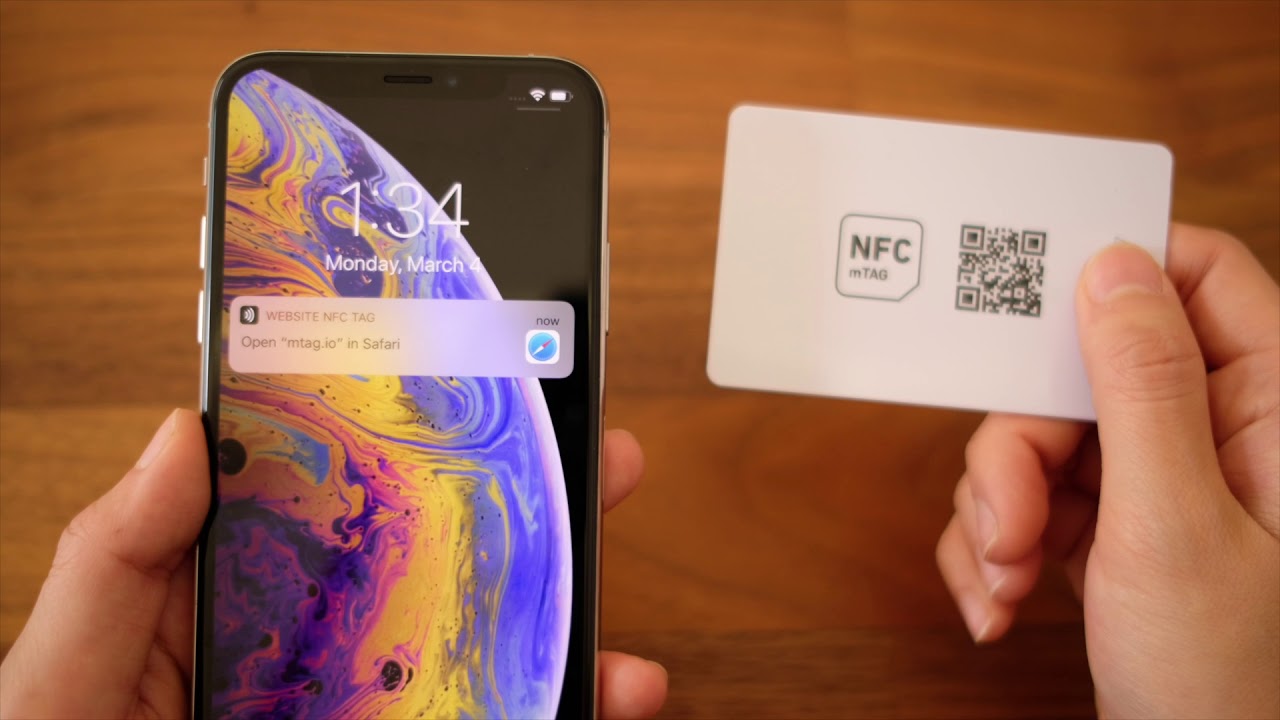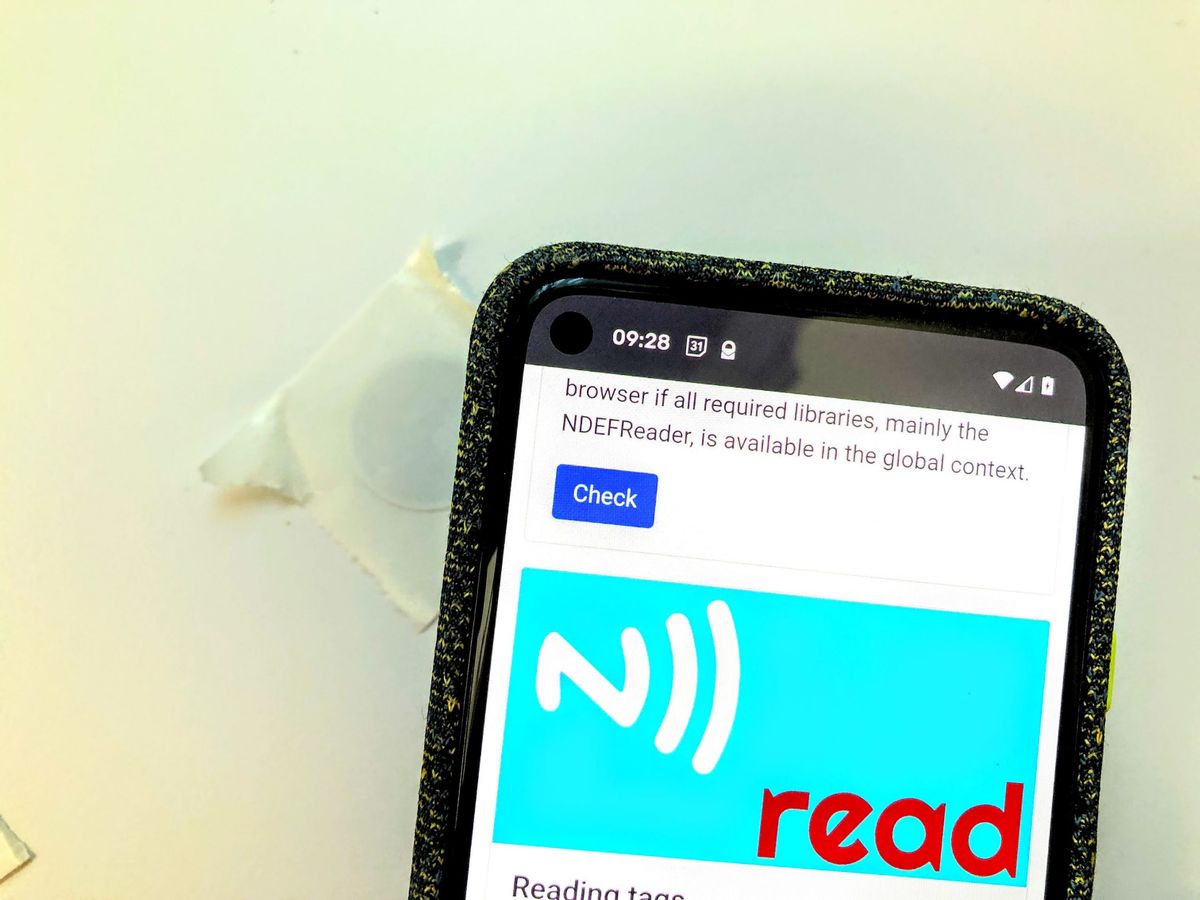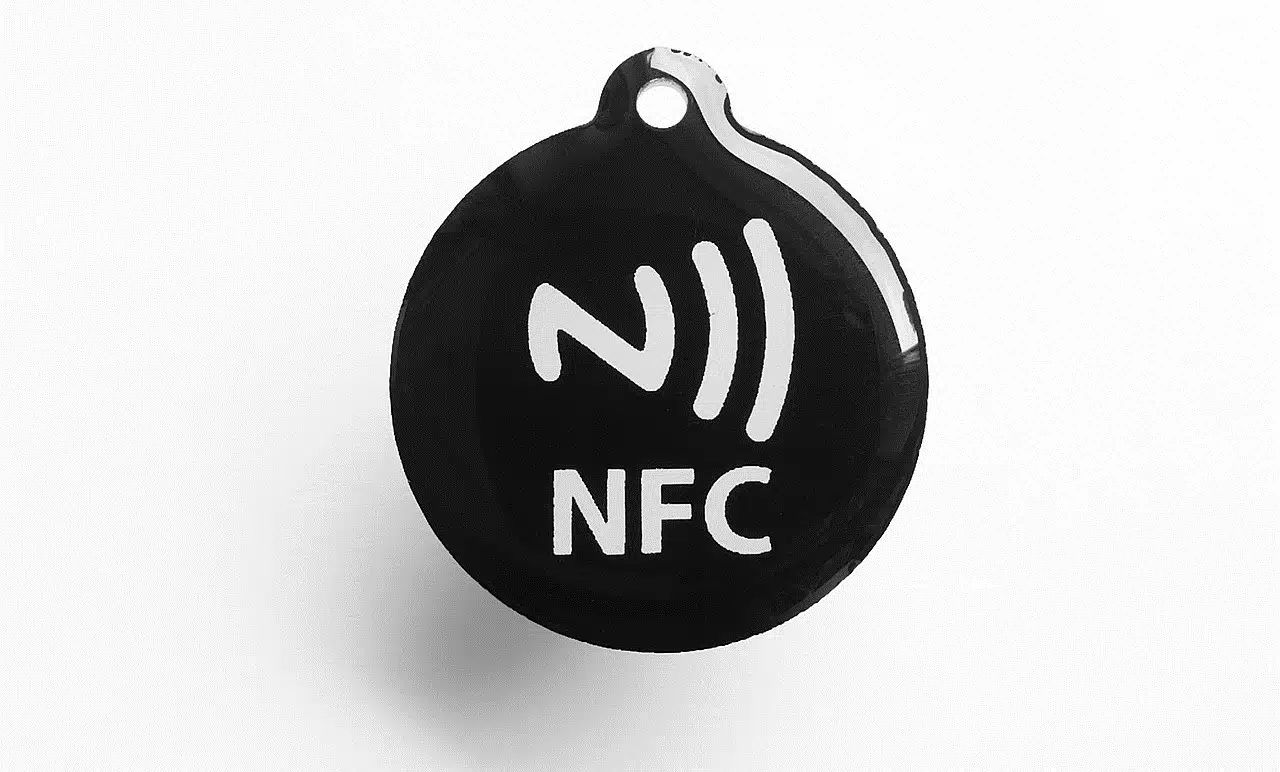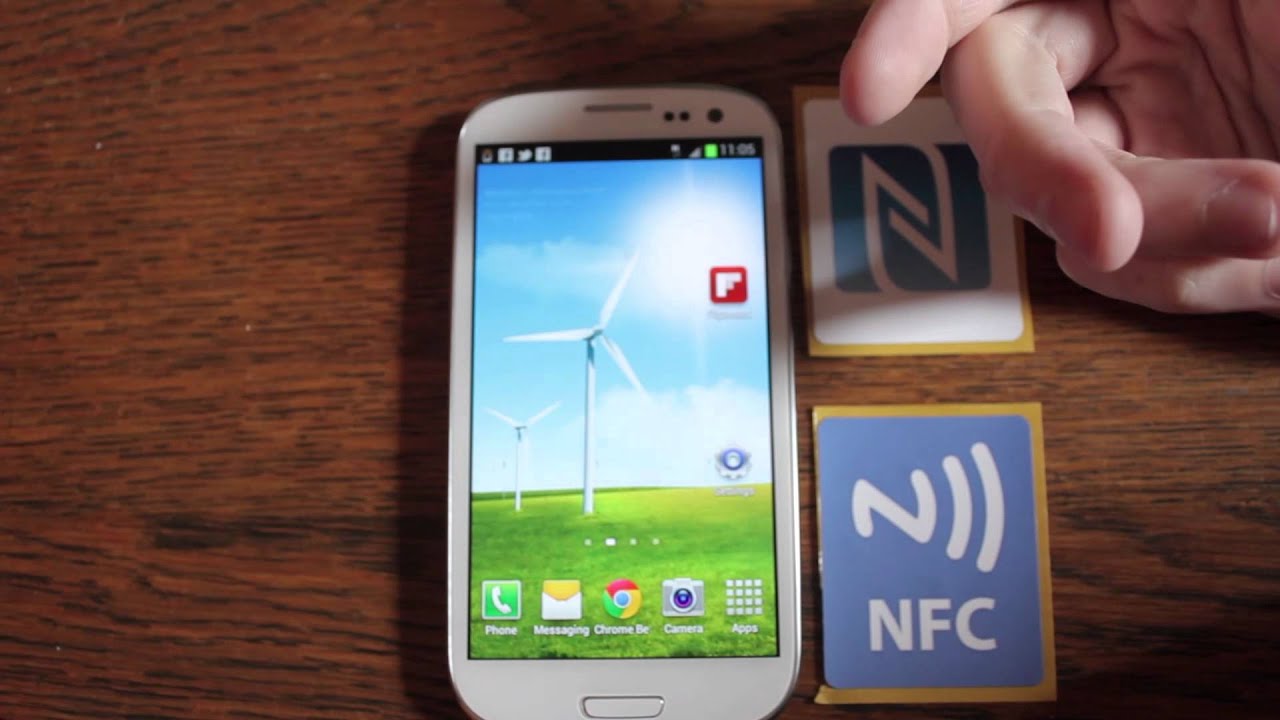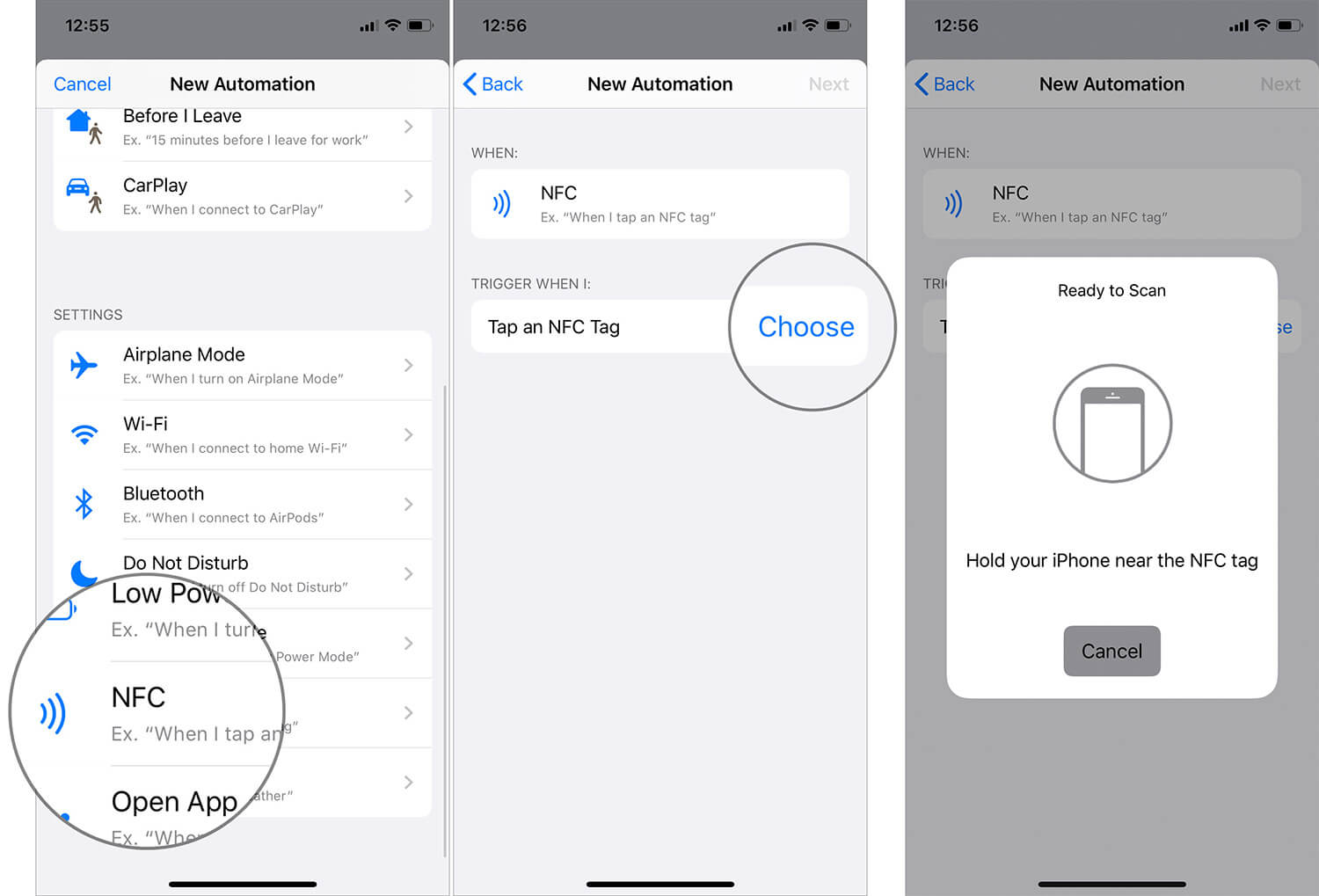Introduction
NFC, which stands for Near Field Communication, is a technology that allows for short-range communication between devices by simply tapping them together or bringing them close to each other. This technology has become increasingly popular and is now integrated into various devices such as smartphones, tablets, and even credit cards.
While NFC offers many convenient functionalities like contactless payments and instant sharing of information, there may be instances when you want to turn off an NFC tag. Whether it’s to prevent accidental interactions or to conserve battery life, knowing how to disable NFC tags can be useful.
In this article, we will explore the different methods you can use to turn off an NFC tag. From removing or disabling the tag to using NFC-blocking sleeves and managing NFC settings on your device, we will cover everything you need to know to control NFC interactions.
But before we dive into the methods, let’s take a closer look at how NFC tags work and the reasons why you might want to turn them off.
What is NFC?
NFC, short for Near Field Communication, is a wireless technology that allows for communication between two devices when they are placed in close proximity, typically within a few centimeters. It operates on the principle of electromagnetic induction, similar to RFID (Radio Frequency Identification) technology.
NFC has gained popularity due to its convenience and ease of use. It enables devices such as smartphones, tablets, and smartwatches to establish contactless communication with other NFC-enabled devices or objects, such as NFC tags or payment terminals. This technology has numerous applications, including mobile payment systems, electronic ticketing, access control systems, and data exchange.
With NFC, transferring data or initiating actions is as simple as tapping your device on an NFC tag or bringing it close to an NFC reader. This enables quick and seamless interaction without the need for complex setup or physical connections. NFC is supported by a wide range of devices and operating systems, making it a widely adopted technology.
NFC operates on a frequency of 13.56 MHz and employs the principle of electromagnetic induction. When an NFC-enabled device is brought close to an NFC tag or reader, the electromagnetic field generated by the reader induces a current in the tag, powering it and enabling the exchange of data. The data exchange between devices occurs in a split second, facilitating fast and efficient communication.
Overall, NFC technology offers a simple and secure way to transfer information and initiate actions, making it a valuable feature in today’s increasingly connected world.
Why would I want to turn off an NFC tag?
While NFC offers many advantages and convenience, there may be scenarios where you would want to turn off an NFC tag. Here are a few reasons why you might want to disable NFC:
- Accidental interactions: NFC tags are often used to trigger specific actions or automate tasks. However, in certain situations, you may accidentally tap your device on an NFC tag, triggering unintended actions. For example, if you have an NFC tag in your wallet and accidentally tap your phone on it, it could launch an app or perform an action that you didn’t intend.
- Battery conservation: NFC consumes power when activated, as it constantly scans for nearby tags and devices. If you are concerned about preserving your device’s battery life, turning off NFC can help extend the battery duration.
- Privacy concerns: NFC tags can be used to collect information or initiate certain actions without your knowledge. By disabling NFC, you can have more control over which interactions occur between your device and NFC tags, ensuring your privacy is maintained.
- Security reasons: While NFC technology is generally secure, there have been instances of NFC tags being exploited for malicious purposes. By turning off NFC when not in use, you can reduce the risk of unauthorized access or data theft.
It’s important to note that NFC tags do not actively communicate with your device unless prompted. They require physical contact or close proximity to initiate an interaction. However, if you have specific concerns or reasons to temporarily or permanently disable NFC, it’s good to have the option to do so.
Now that we understand the reasons why you may want to turn off NFC tags, let’s explore the various methods that you can use to achieve this.
How do NFC tags work?
NFC tags are small, passive devices that consist of a microchip and an antenna. These tags store information that can be read and processed by NFC-enabled devices. When an NFC-enabled device is brought within close proximity to an NFC tag, it activates the tag and initiates communication.
There are two types of NFC tags: read-only and read-write. Read-only tags contain predefined information that cannot be modified, while read-write tags allow for read and write operations, enabling data to be written and rewritten onto the tag.
When an NFC-enabled device approaches an NFC tag, the device’s NFC reader emits a radio frequency field that powers the tag. This power is used to activate the tag’s microchip, allowing it to communicate with the device. The tag then sends its stored information back to the device using the same radio frequency field.
The communication between the NFC reader and tag occurs through electromagnetic induction. The reader generates an alternating electromagnetic field, which induces a current in the tag’s antenna. This current powers the microchip within the tag, enabling it to send data back to the reader.
Once communication is established, the NFC-enabled device can interpret the information stored on the NFC tag. This information can vary depending on the purpose of the tag, such as a website URL, contact information, or commands to perform specific actions on the device.
NFC tags operate at a frequency of 13.56 MHz, which allows for short-range communication. The range typically extends up to a few centimeters, ensuring that the devices must be in close proximity for successful communication. This close proximity ensures the security of the NFC communication, as it prevents unauthorized access from a distance.
In summary, NFC tags work by utilizing electromagnetic induction to establish communication between an NFC-enabled device and the tag. The device’s NFC reader powers the tag, allowing it to transmit its stored information back to the device. This communication enables various applications and functionalities, such as instant information sharing, contactless payments, and automation of tasks.
The different types of NFC tags
NFC tags come in different forms and have varying capabilities, allowing for a wide range of applications. Here are some of the common types of NFC tags:
- NFC Stickers: NFC stickers are typically adhesive labels or small tags that can be attached to surfaces. They are often used in marketing campaigns, product packaging, or for enabling quick interactions with devices.
- NFC Cards: NFC cards are similar to standard contactless smart cards but with added NFC functionality. These cards can be used for access control, transportation systems, loyalty programs, and identification purposes. They are commonly used in industries such as healthcare, hospitality, and transportation.
- NFC Key fobs: NFC key fobs are small, keychain-sized devices that contain an NFC tag. They are commonly used for access control systems, allowing users to tap their fob onto a reader to gain entry to a building or property.
- NFC Rings: NFC rings are wearable devices that incorporate an NFC tag. These rings can be used for various applications, such as unlocking smartphones, making payments, or accessing NFC-enabled devices.
- NFC Labels: NFC labels are thin, flexible tags with adhesive backing that can be attached to objects or surfaces. These labels are commonly used in asset tracking, inventory management, and supply chain applications.
Each type of NFC tag has its own advantages and use cases. Some tags are read-only, meaning their encoded data cannot be modified, while others are read-write, allowing for data to be written and updated over time. Additionally, the storage capacity of NFC tags can vary, ranging from a few kilobytes to several megabytes.
It’s important to consider the specific requirements of your application when choosing an NFC tag. Factors such as the desired read range, durability, and storage capacity should be taken into account. Additionally, compatibility with your NFC-enabled devices and the ease of integration with existing systems are also important considerations.
By understanding the different types of NFC tags available, you can select the most suitable tag for your specific needs and unlock the full potential of NFC technology.
Method #1: Remove or disable the NFC tag
If you no longer want to use or interact with an NFC tag, the simplest solution is to remove or disable the tag. Here are a few methods to achieve this:
- Physically remove the NFC tag: If the NFC tag is an adhesive sticker or a removable tag, you can simply peel it off or detach it from the object or surface it is attached to. This completely eliminates the possibility of any further NFC interactions with that particular tag.
- Disable the NFC tag: Some NFC tags come with a disable feature that allows you to render the tag inactive. This can be done by using an NFC tag writing app or software to rewrite the tag’s data with a null value or by programming it to be permanently disabled.
- Use NFC tag rewritable functionality: If the NFC tag is a read-write tag, you can overwrite its data with a blank or null value. This effectively removes any information stored on the tag and disables its functionality.
- Physically damage the NFC tag: In extreme cases where you want to ensure that the NFC tag cannot be used at all, you can physically damage the tag by cutting, tearing, or breaking it. This irreversibly disables the tag and prevents any future NFC interactions.
It’s essential to note that once an NFC tag is removed or disabled, it cannot be reactivated or restored to its original functionality. Therefore, consider this method only if you are certain that you no longer want to use the NFC tag in question.
By removing or disabling the NFC tag, you can effectively prevent any unintended interactions or unwanted access associated with that particular tag.
Now that we’ve explored the first method of turning off an NFC tag, let’s move on to the next method, which involves using NFC-blocking sleeves.
Method #2: Place the NFC tag in an NFC-blocking sleeve
If you want to temporarily disable an NFC tag without removing it or permanently disabling it, you can use an NFC-blocking sleeve. An NFC-blocking sleeve is a small pouch or sleeve made from materials that block the electromagnetic fields necessary for NFC communication. Here’s how you can use this method:
- Select an NFC-blocking sleeve: You can find NFC-blocking sleeves in various sizes and designs, ranging from pouches to sleeves that fit specific objects like credit cards or passports. Choose a sleeve that fits your specific NFC tag or device.
- Insert the NFC tag into the sleeve: Open the NFC-blocking sleeve and place the NFC tag inside. Ensure that the tag is fully covered and enclosed by the sleeve to block any incoming or outgoing NFC signals.
- Close the sleeve: Once the NFC tag is securely inside the sleeve, close it properly to prevent the tag from accidentally slipping out or coming into contact with other NFC devices.
- Keep the tag inside the sleeve when not in use: Whenever you want to disable the NFC tag, simply keep it inside the NFC-blocking sleeve. The sleeve acts as a shield, effectively blocking any NFC signals from reaching the tag and preventing any interactions.
By using an NFC-blocking sleeve, you can easily control when your NFC tag is active and prevent any accidental or unwanted interactions. This method allows for temporary disablement of the tag without making any permanent changes.
It’s important to note that NFC-blocking sleeves should be used with caution. Ensure that the sleeve is of good quality and provides sufficient blocking capabilities. Additionally, check the compatibility of the sleeve with your specific NFC tag or device to ensure proper functionality.
Now that we’ve covered the second method of turning off an NFC tag, let’s move on to the next method, which involves turning off the NFC feature on your device.
Method #3: Turn off the NFC feature on your device
If you want to disable NFC interactions on your device altogether, you can simply turn off the NFC feature. By deactivating NFC, you ensure that your device will not initiate any communication or respond to NFC tags. Here’s how you can do it:
- Access the Settings menu on your device: Open the Settings app on your device. The location and appearance of the Settings app may vary depending on your device’s operating system.
- Find the NFC settings: Look for a section or menu option specifically labeled “NFC” or “Connectivity.” This is where you can manage the NFC settings on your device.
- Toggle the NFC switch: Within the NFC settings, you will find a toggle switch or an option to enable or disable NFC. Simply tap the switch or toggle it off to deactivate the NFC feature on your device.
- Verify the status: After you have turned off the NFC feature, check to ensure that it is indeed disabled. You can do this by trying to tap an NFC tag or by checking the NFC status indicator, if available.
Once you have turned off NFC on your device, it will no longer respond to any NFC tags or initiate any NFC interactions. This is an effective method to disable NFC and prevent any unintended interactions.
Keep in mind that disabling the NFC feature on your device can have implications for other functionalities that rely on NFC, such as contactless payments or file sharing. If you use those features frequently, consider the impact before disabling NFC.
Now that we’ve explored the third method of turning off NFC, let’s move on to the next method, which involves using an NFC tag management app.
Method #4: Use an NFC tag management app
To have more control over your NFC tags and their interactions, you can use an NFC tag management app. These apps provide advanced features and customization options, allowing you to enable or disable specific actions or automate tasks associated with NFC tags. Here’s how you can use this method:
- Choose an NFC tag management app: There are several NFC tag management apps available for both Android and iOS devices. Research and select a reputable app that suits your needs and is compatible with your device.
- Install and launch the app: Download the selected NFC tag management app from the respective app store and install it on your device. Launch the app to get started.
- Scan or select the NFC tag: In the NFC tag management app, scan or manually select the NFC tag you want to manage. The app will recognize the tag and display its associated actions or settings.
- Disable or modify the tag’s actions: Within the app, you can disable specific actions or modify the behaviors associated with the NFC tag. This can include disabling automatic app launches, preventing certain tasks from being triggered, or changing the behavior entirely.
- Save and apply the changes: Once you have made the desired changes, save the settings within the app. These changes will be applied to the NFC tag, effectively altering its behavior or disabling certain actions when interacting with it.
Using an NFC tag management app allows you to have granular control over the functionality and behavior of your NFC tags. You can customize how your device responds to specific tags, ensuring that only the desired actions are performed.
It’s important to note that the availability of advanced NFC tag management features may vary depending on the app and your device’s operating system. Some apps may also allow you to password-protect or encrypt certain NFC tags for added security.
Now that we’ve covered the fourth method of turning off NFC, you have multiple options to choose from based on your specific requirements and preferences.
Conclusion
NFC technology offers convenient and fast communication between devices, but there may be times when you want to turn off an NFC tag. Whether it’s to prevent accidental interactions, conserve battery life, or protect your privacy, there are several methods you can use to achieve this.
Firstly, you can remove or disable the NFC tag altogether. Physically removing the tag or disabling its functionality ensures that no further interactions can occur. This method is effective for permanently discontinuing the use of a specific NFC tag.
If you want to temporarily disable an NFC tag without removing it, using an NFC-blocking sleeve is a suitable option. These sleeves prevent NFC signals from reaching the tag, effectively disabling its interactions when it is inside the sleeve.
An alternative method is to turn off the NFC feature on your device. By accessing the NFC settings on your device and disabling the feature, you can prevent your device from initiating any NFC communications or responding to NFC tags.
Lastly, you can utilize an NFC tag management app to have more control over your NFC tags. These apps allow you to customize the actions associated with your tags, enabling you to enable or disable specific tasks or automate actions based on your preferences.
In conclusion, understanding how to turn off an NFC tag gives you the flexibility and control over your NFC interactions. Whether you choose to remove, disable, block, or manage the tags, you can optimize your NFC experience and ensure that interactions are intentional and aligned with your needs.







